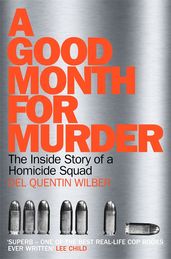Synopsis
'Superb - one of the best real-life copy books ever written.' Lee Child
In a true crime cross between James Ellroy and David Simon's The Wire, A Good Month for Murder follows twelve homicides, three police-involved shootings and the furious hunt for an especially brutal killer in Washington D.C.
After gaining unparalleled access to the homicide unit in Prince George's County, which borders the nation's capital, bestselling author Del Quentin Wilber begins shadowing the talented, often quirky detectives who get the call when a body falls. After a quiet couple of months, all hell breaks loose: suddenly every detective in the squad is scrambling to solve one shooting and stabbing after another. Meanwhile, the entire unit is obsessed with a stone-cold 'red ball', a high-profile case involving a seventeen-year-old honour student attacked by a gunman who kicked down the door to her house and shot her in her bed. This is the inside story of how a team of detectives carry out their almost impossible job.
Murder is the police investigator's ultimate crucible: to solve a killing, a detective must speak for the dead. A Good Month for Murder is a compelling true crime account which shows what it takes to succeed when the stakes couldn't possibly be higher.
Details
Reviews
A stunner! The best non-fiction detective book I've ever read.
Superb - one of the best real-life cop books ever written.
The book is briskly paced . . . Wilber, a former Washington Post reporter, is painstaking in tracing how the detectives go about their fieldwork. The cat-and-mouse games they play with suspects in the interrogation room are fascinating.
Wilber chronicles twelve homicides that occurred during February 2013 [and] employs his considerable skills to tell the stories of those investigating these violent acts . . . Wilber - who was given extraordinary access to interrogation rooms, crime scenes, and family homes - vividly depicts the tension, pressure and occasional tedium involved in crime-solving, portraying the work as both vital and unending.
